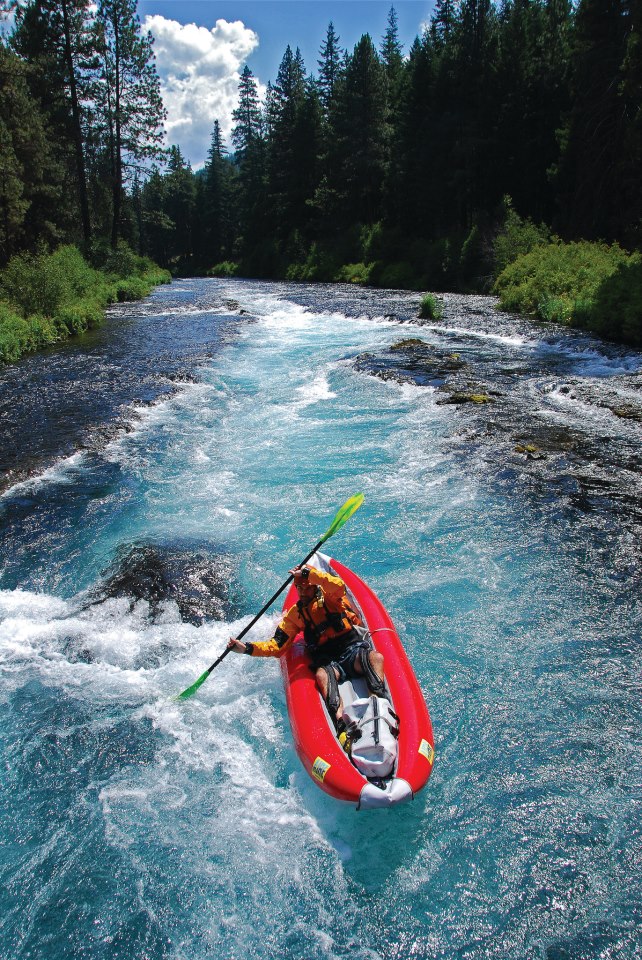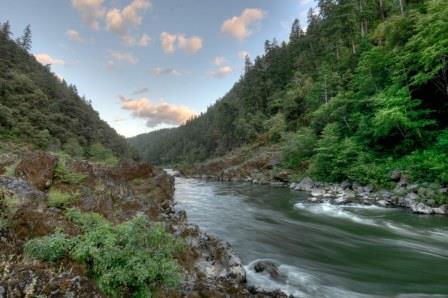The National Wild & Scenic River Act

Created by Congress in 1968, the National Wild and Scenic Rivers System was enacted “to preserve certain rivers with outstanding natural, cultural, and recreational values in a free-flowing condition for the enjoyment of present and future generations.” The goal is to protect and preserve the unique character and attributes of these the nation's most pristine rivers while balancing recreation, water quality, fish and wildlife, and other values.
Senator Wyden's River Democracy Act would designate 4,700 miles of Wild & Scenic Rivers in Oregon.
What does a Wild & Scenic River designation mean?
Protection under the National Wild and Scenic River Act includes the prohibition of damming or otherwise altering the river in any way including dams, bank alternation, as well as any mineral, gas, or oil extraction. It also includes a buffer corridor that can be either 1/4 or 1/2 mile on either side of the river. Within this buffer activities that would degrade the values for which the river was designated are not allowed - potential values include fish, wildlife, recreation, scenery, geology, cultural, etc. Most other activities are allowed to continue as long as they don't degrade these values.
Benefits of Wild & Scenic Rivers
Aside from breathtaking views, Wild and Scenic rivers provide many benefits for wildlife and humans. Millions of Oregonians depend on clean drinking water coming from rivers. Many of our best trails and campgrounds are found along rivers (some designated as Wild and Scenic, some not...yet). Rivers also provide key habitats for salmon, steelhead, trout, bald eagles, osprey, and many other fish and wildlife.
Many Key Oregon Rivers Lack Protection
Whether it's the South Umpqua, Steamboat Creek, coastal rivers like the Alsea and Siletz, or additions to rivers that are only partially protected like the North Fork Crooked or the Illinois, many of our key sources of clean drinking water, recreational opportunities, and wildlife habitat remain unprotected.
Wild and Scenic Rivers in Oregon
There are approximately 110,994 miles of river in Oregon, of which 2,173 miles are designated as Wild & Scenic—roughly 2% of the state's river miles. Some of these 70+ designated rivers include the Clackamas, Deschutes, John Day, North Umpqua, and Sandy Rivers. Here is an interactive map of Oregon's Wild and Scenic Rivers.
Oregon’s very own Rogue River was one of the original eight rivers designated in the National Wild and Scenic Rivers Act. Known for its salmon runs and rugged beauty, a portion of the Rogue River was designated October 2, 1968. In 1988 a section of the upper river was designated near Crater Lake National Park. A number of tributaries were designated in early 2019, a sign that it often takes more than one effort to protect our cherished rivers.

Management
These rivers are managed primarily by the US Forest Service and Bureau of Land Management in Oregon. Wild and Scenic Rivers that flow through private land do not have any impact on what can happen in the buffer around the river.
National Perspective
As of 2018 the National System protects 13,416 miles of 226 rivers in 38 states and the Commonwealth of Puerto Rico; this is less than one-quarter of one percent of the nation's rivers. By comparison, more than 75,000 large dams across the country have modified at least 600,000 miles, or about 17% of American rivers. There's much more work to be done to protect our rivers and the clean water, recreational opportunities, and wildlife habitat they provide.

